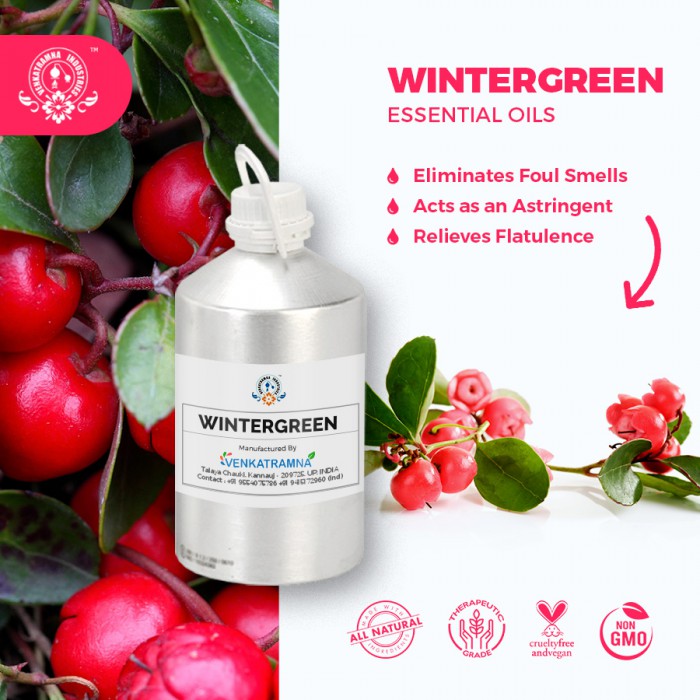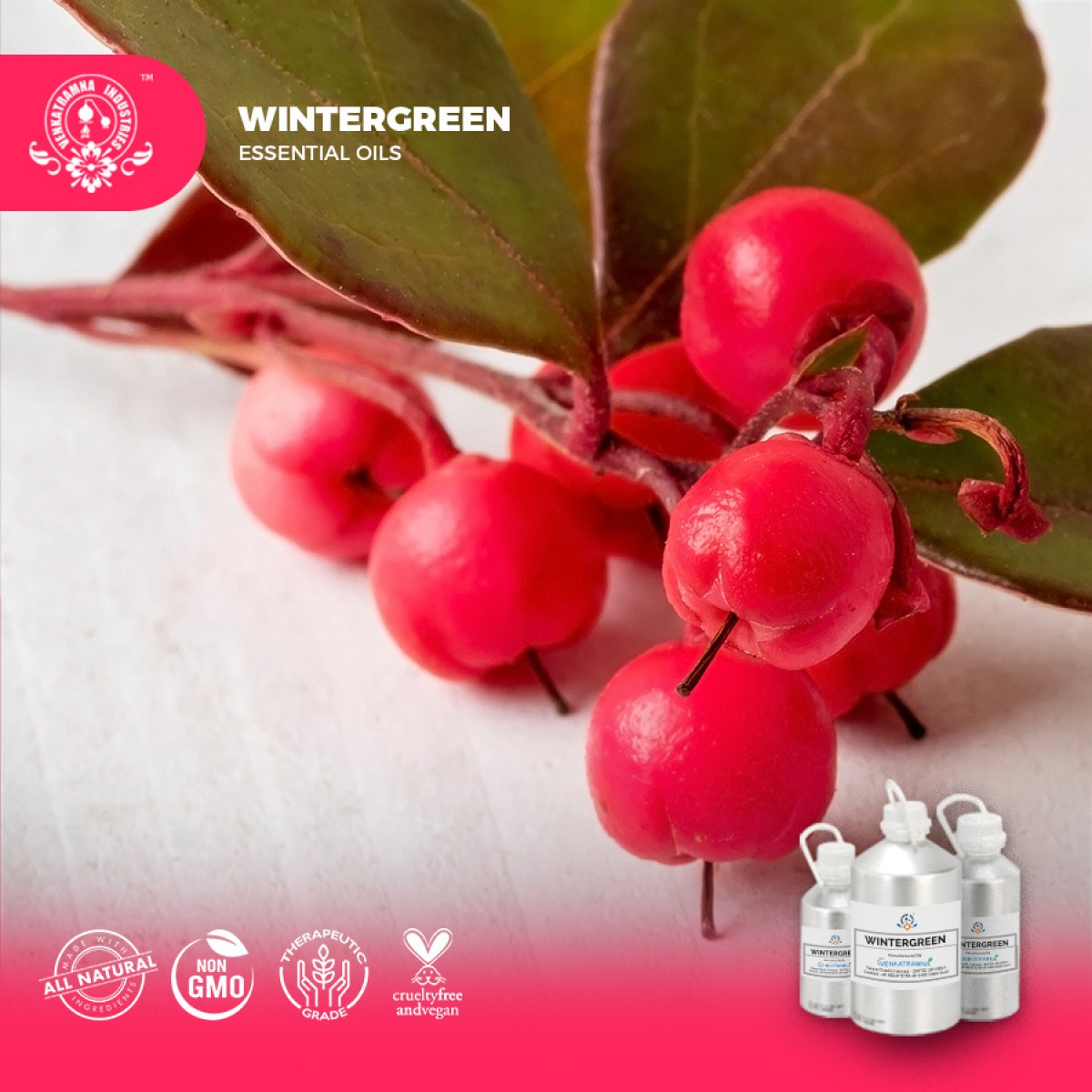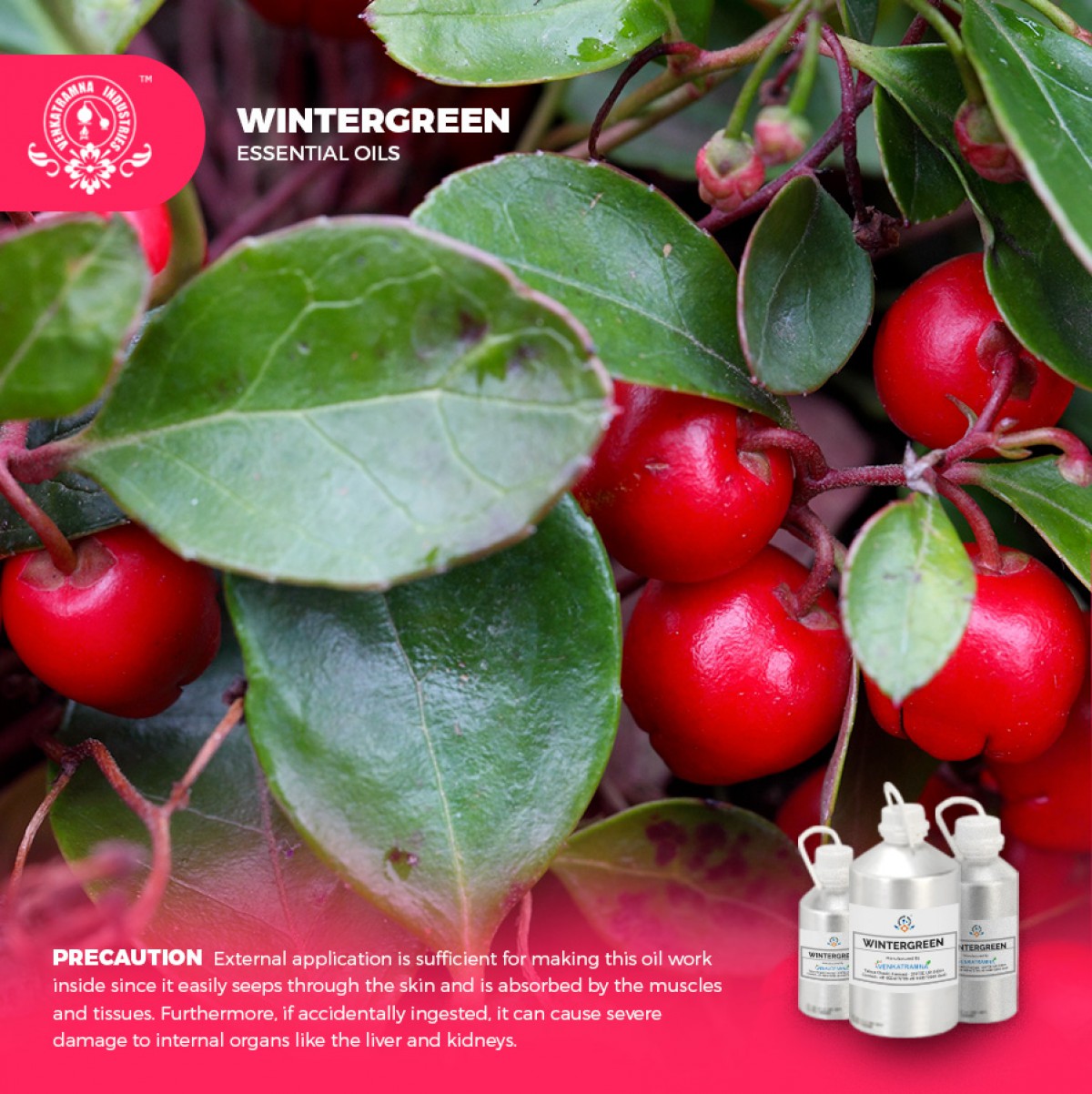Botanical Name: Gaultheria Procumbens Common name: Snowberry Plant Read More
|
Botanical Name: |
Gaultheria
Procumbens |
|
Common name: |
Snowberry |
|
Plant
family: |
Ericaceae |
|
Genus: |
Gaultheria |
|
Appearance/Color: |
Pale yellow or
pinkish fluid liquid. |
|
Odor: |
A middle note with a
strong aroma, Wintergreen has a characteristic sweet and minty scent similar
to Sweet Birch, a main component in the flavour of root beer, with spicy
tones. |
|
Blends With: |
Ylang-Ylang,
Peppermint, Marjoram, Lavender, Birch Sweet and Vanilla. |
|
Origin: |
China |
|
Source: |
Leaves |
|
Method
of Extraction: |
Steam
Distillation |
Gaultheria procumbens L. (eastern teaberry, checkerberry,
American wintergreen, Ericaceae) is a small, low-growing, evergreen shrub
native to northeastern North America and widely cultivated all through the
Northern Hemisphere due to its ornamental and medicinal value. The most used
plant organs of G. procumbens are the
leaves, traditionally valued as anti-inflammatory and analgesic agents as well
as a source of wintergreen essential oil. Methyl salicylate, constituting over
95% of the essential oil, and its glycosidic precursor—gaultherin—are the main
representatives of salicylates, so far considered as the primary active
constituents of Gaultheria plants.
However, plant extracts are usually multi-component and their activity is
rarely due to one, single constituent.
Gaultheria procumbens, also called teaberry and checkerberry, has many short erect branches with short-stalked, thick, shining tooth-edged leaves in the upper part. Flowers hang singly from the leaf axils and have a pale pink, waxy-looking, urn-shaped corolla. The bright red berrylike fruits, sometimes called deerberries, consist of the much-enlarged fleshy calyx, which surrounds the small many-seeded capsule. The plant is a native of shady woods on sandy soil, particularly in the mountainous areas of the northern United States and southern Canada; it is hardy in England. Mountain tea, an infusion of wintergreen leaves, has been used in some parts of North America as a beverage.
DISCLAIMER
The complete range of conditions
or methods of use are beyond our control therefore we do not assume any
responsibility and expressly disclaim any liability for any use of this
product. Information contained herein is believed to be true and accurate however,
all statements or suggestions are made without warranty, expressed or implied,
regarding accuracy of the information, the hazards connected with the use of
the material or the results to be obtained from the use thereof. Compliance
with all applicable federal, state, and local laws and local regulations
remains the responsibility of the user.
The FDA has not evaluated the
statements on this website. No claims are made by Venkatramna Industries as to
the medicinal value of any products from vriaroma.com or by us. The information
presented here is for educating our customers about the traditional uses of
essential oils and is not intended to diagnose, treat, cure, or prevent any
disease. You are responsible for understanding the safe application of these products.
If you have any questions, please call or email us for further information.
As per NAHA guidelines, New Directions Aromatics
(NDA) does not recommend the ingestion of essential oils. It is imperative to
consult a medical practitioner before using Essential Oils for therapeutic
purposes. Pregnant and nursing women and those taking prescription drugs are
especially advised not to use this product without the medical advice of a
physician. The oil should always be stored in an area that is inaccessible to
children, especially those under the age of 7.
Wintergreen, any of several
evergreen, aromatic plants of the heath family (Ericaceae). Oil of wintergreen,
derived from the leaves of Gaultheria procumbens, is a volatile oil used as a
flavouring for candies and chewing gum and in the treatment of muscular aches
and pains. The active ingredient, methyl salicylate, is also synthesized and
sold as oil of wintergreen.
The active ingredient in
wintergreen oil, methyl salicylate, is closely related to aspirin and has
analgesic and anti-inflammatory properties. As such, products containing
wintergreen oil are often used as an anti-inflammatory and topical pain
reliever.
In industry and manufacturing,
wintergreen oil is used as a flavoring agent for products such as candies,
toothpastes, and mouthwashes. It can also be used as a scent additive.
COMMON USAGE
·
Acts as an analgesic
·
Induces relaxation
·
Fights arthritis
·
Relieves spasms
·
Prevents microbial infections
·
Eliminates foul smells
·
Acts as an astringent
·
Relieves flatulence
·
Promotes urination
·
Acts as an emmenagogue
·
Stimulates blood circulation
Ingredients:
|
S. No. |
Ingredients |
Strength (%) |
|
1 |
Methyl salicylate |
96.0-99.0 |
TOXICOLOGICAL
INFORMATION
Safety Summary
·
Hazardous Drug interaction; inhibits
blood clotting; toxicity; high doses are teratogenic.
·
Contraindications Anticoagulant
medication, major surgery, hemophilia, other bleeding disorders. Pregnancy,
breastfeeding, children. People with salicylate sensitivity.
Information on toxicological effects
·
Acute toxicity
o
LD50 Oral - Rat - male and female - 887 mg/kg
(OECD Test Guideline 401) Inhalation: No data available
o
LD50 Dermal - Rabbit - > 5,000 mg/kg No data
available
·
Skin corrosion/irritation Skin - Rabbit Result:
Mild skin irritation - 4 h (OECD Test Guideline 404)
·
Serious eye damage/eye irritation Eyes - Rabbit
Result: No eye irritation - 72 h (OECD Test Guideline 405)
·
Respiratory or skin sensitisation Maximisation
Test - Guinea pig Result: Does not cause skin sensitisation. (OECD Test
Guideline 406)
·
Germ cell mutagenicity Ames test S. typhimurium
Result: negative
ECOLOGICAL
INFORMATION
·
Aquatic Toxicity:
o
Toxicity to fish static test LC50 - Danio rerio
(zebra fish) - > 100 mg/l - 96 h (OECD Test Guideline 203)
o
Toxicity to algae static test EC50 - Desmodesmus
subspicatus (green algae) - 27 mg/l - 72 h (OECD Test Guideline 201)
·
Bioaccumulation: No data available
·
Mobility in soil: No data available
·
Persistence and degradability: Biodegradability
aerobic - Exposure time 28 d Result: 98.4 % - Readily biodegradable (OECD Test
Guideline 301B)
·
PBT and vPvB assessment: No data available
·
Other adverse effects: Do not allow it to
enter into water systems and marine environment.





 MSDS-Wintergreen.pdf
MSDS-Wintergreen.pdf




